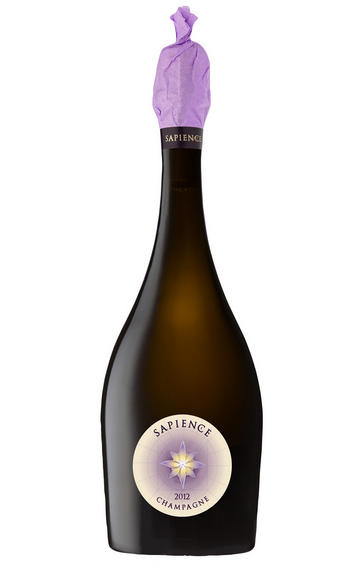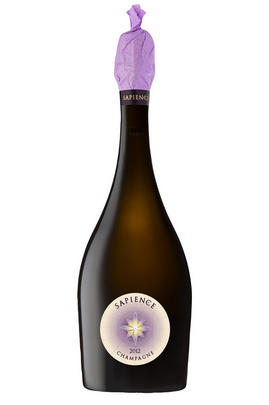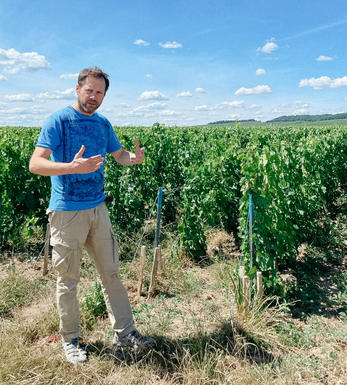
2012 Champagne Marguet, Sapience, 1er Cru, Brut Nature

About this WINE

Champagne Marguet
Champagne Marguet is located in the village of Ambonnay, also known as the heartland of Grand Cru Pinot Noir. This family property was founded in 1870, and fifth-generation member Benoît Marguet-Bonnerave remains at the helm today.
Benoît has fundamentally changed the direction of the family business, having converted operations to biodynamic viticulture in 2009. He strives relentlessly to nurture energy in all his cuvées following the rhythmic cycles of nature, as well as cosmic and lunar cycles. Some of his methods are far from conventional – as are his wines, which are some of the most highly-prized and expressive in the region.
His sensitivities and skill in the vineyards are famous amongst Champagne’s vigneron community. Even Krug have employed his talents in farming their Ambonnay Pinot Noir. His cuvées and lieu dits are both contemporary and evocative, standing as beautiful expressions of terroir. Timeless, radical and insanely delicious, these wines offer value, purity, and quality.

Brut Champagne
Brut denotes a dry style of Champagne (less than 15 grams per litre). Most Champagne is non-vintage, produced from a blend from different years. The non-vintage blend is always based predominately on wines made from the current harvest, enriched with aged wines (their proportion and age varies by brand) from earlier harvests, which impart an additional level of complexity to the end wine. Champagnes from a single vintage are labelled with the year reference and with the description Millésimé.
Non-vintage Champagnes can improve with short-term ageing (typically two to three years), while vintages can develop over much longer periods (five to 30 years). The most exquisite and often top-priced expression of a house’s style is referred to as Prestige Cuvée. Famous examples include Louis Roederer's Cristal, Moët & Chandon's Dom Pérignon, and Pol Roger's Cuvée Sir Winston Churchill.
Recommended Producers : Krug, Billecart Salmon, Pol Roger, Bollinger, Salon, Gosset, Pierre Péters, Ruinart

Champagne blend
Which grapes are included in the blend, and their proportion, is one of the key factors determining the style of most Champagnes. Three grapes are used - Pinot Noir, Chardonnay and Pinot Meunier.
26% of vineyards in Champagne are planted with Chardonnay and it performs best on the Côtes des Blancs and on the chalk slopes south of Epernay. It is relatively simple to grow, although it buds early and thus is susceptible to spring frosts. It produces lighter, fresher wines than those from Burgundy and gives finesse, fruit and elegance to the final blend. It is the sole grape in Blancs de Blancs, which are some of the richest long-lived Champagnes produced.
Pinot Noir accounts for nearly 40% of the plantings in Champagne and lies at the heart of most blends - it gives Champagne its body, structure, strength and grip. It is planted across Champagne and particularly so in the southern Aube district.
The final component is Pinot Meunier and this constitutes nearly 35% of the plantings. Its durability and resistance to spring frosts make the Marne Valley, a notorious frost pocket, its natural home. It ripens well in poor years and produces a soft, fruity style of wine that is ideal for blending with the more assertive flavours of Pinot Noir. Producers allege that Pinot Meunier lacks ageing potential, but this does not deter Krug from including around 15% of it in their final blends.


Buying options
Add to wishlist
Description
The Sapience is a remarkable project, bringing together some of the greatest terroirs and vignerons of Champagne. It’s a blend of 50% Chardonnay from David Leclappart in Trépail, 25% Pinot Noir from Benoît Lahaye in Grand Cru Bouzy and 25% Meunier from Georges Laval in Cumières. Having spent 10 months in Allier oak before bottling, and nine years on the lees, this is a wine of profound energy, expression and depth. Transcending the uniform boundaries of prestige cuvées, this one of the region’s greatest wines. Disgorged September 2021. It contains zero dosage. Drink now to 2040+.
Davy Żyw, Senior Wine Buyer, Berry Bros. & Rudd (Sep 2022)
wine at a glance
Delivery and quality guarantee